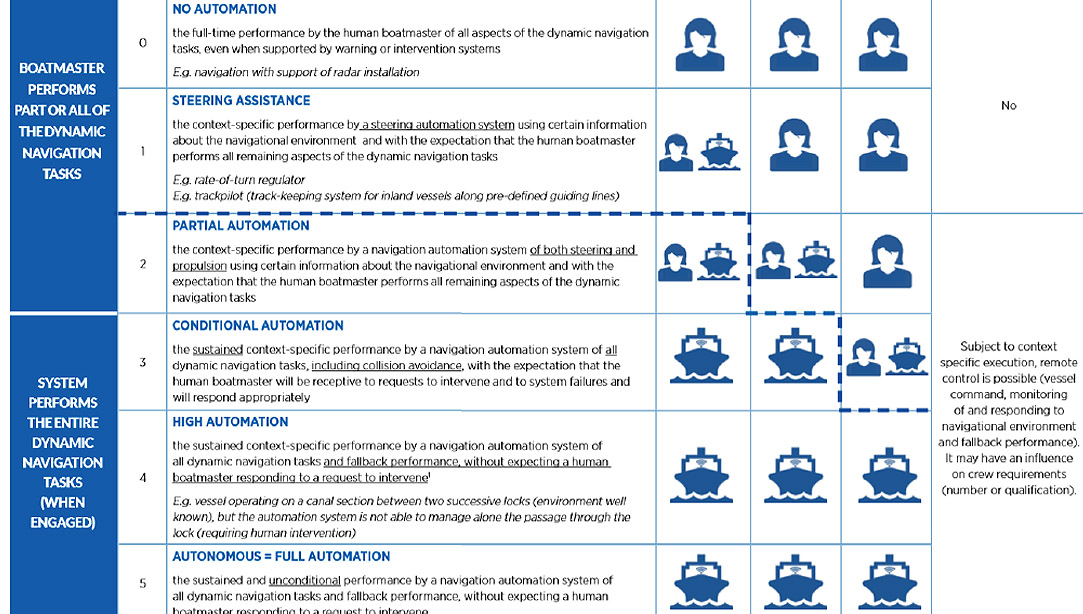
First definitions of what constitutes automated vessels in Europe's waterways sector have been released by European regulators of navigation in the Rhine and beyond.
The Central Commission for the Navigation of the Rhine (CCNR) - which is the leading regulatory body for EU inland navigation – has adopted the definition.
The CCNR adopted the definition in order to prompt a wider 'holistic view of all the legal, ethical and social considerations' of the rise of automation.
The definition includes five levels of automation from zero to five - with five being full automation. The levels pass through spectrums relating to two different functionalities in inland waterways - such as whether a barge has a boatmaster performing part or all of the dynamic navigation tasks, or whether the system performs the entire dynamic navigation tasks.
At the lowest end of the spectrum, a vessel with a full-time 'human boatmaster' with no remote control - whether in the steering wheelhouse, navigational equipment monitoring or other dynamic navigation tasks - would be defined as having zero automation. Whereas at level five; a fully autonomous vessel is defined as the 'sustained and unconditional performance by a navigation automation system' with no human boatmaster expected to intervene.
In between, and subject to 'context specific execution', remote control is also possible along a partial automation or conditional and high automation level, and - as the graphic explains - these importantly may all influence crew requirements in terms of numbers and qualifications.
The CCNR hopes its new definitions of the potential levels of automation will kick-start a general discussion on automation in inland navigation, and provide an understanding of the opportunities for adopting regulatory measures.
'Automation does indeed make life easier for boatmen by lightening the load on the boatmaster, but also raises questions about maintaining safety levels and possible concerns about its scope, namely the level of automation,' says the CCNR.
Specific requirements for inland navigation which need to be taken into account include such areas as crew composition; navigation in enclosed and confined surroundings; passage through locks; water depth and bridge clearances; vessel manoeuvrability.
Tags
